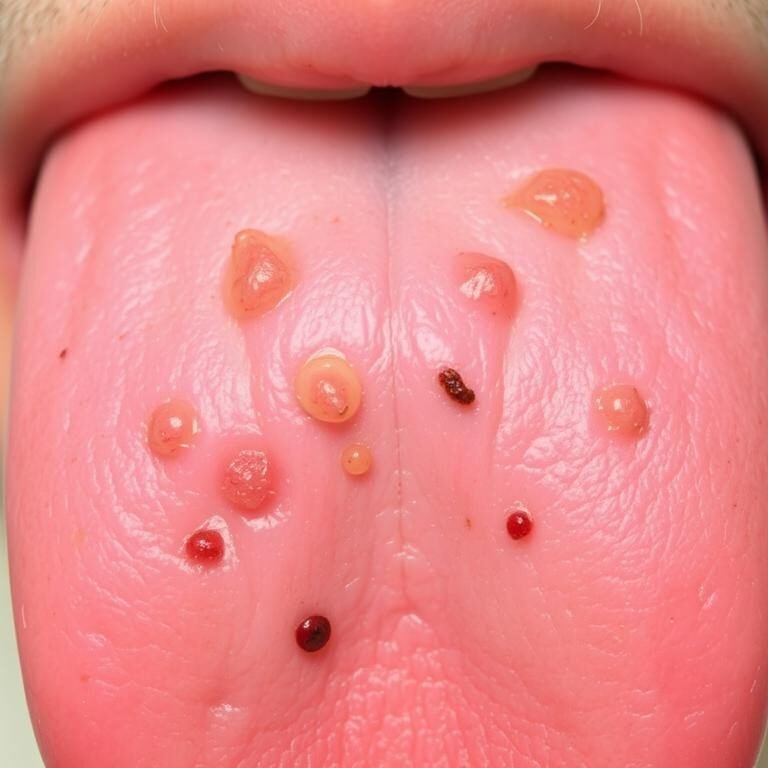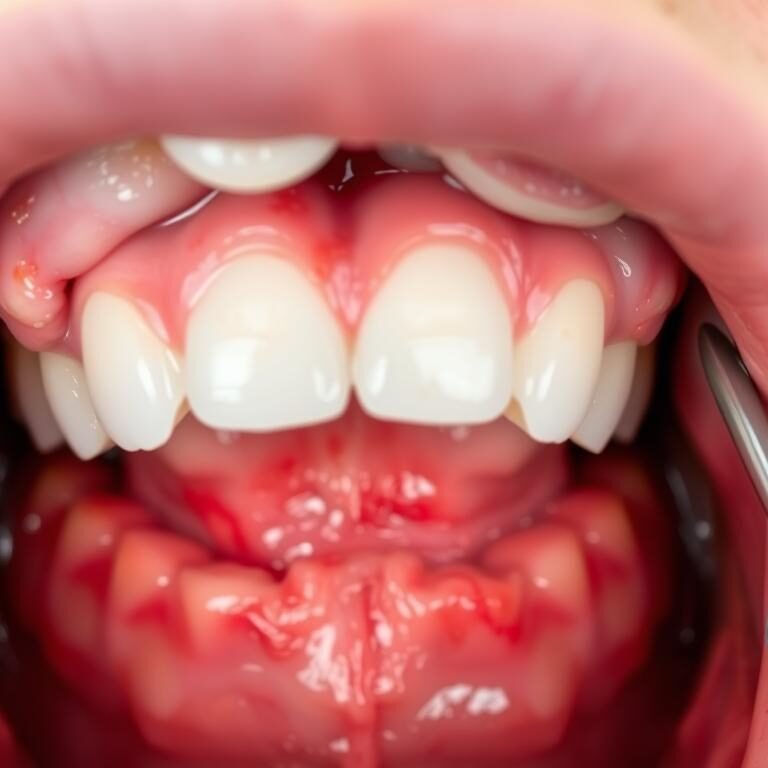Table of Contents
The Importance of Regular Flossing
Regular flossing is an essential part of maintaining good oral hygiene. While many people may overlook the importance of flossing, it plays a crucial role in preventing dental issues such as cavities and gum disease. Flossing removes plaque and food particles that brushing alone cannot reach, helping to keep your teeth and gums healthy.
By flossing daily, you can effectively remove bacteria and debris from the tight spaces between your teeth. This not only helps to prevent tooth decay but also reduces the risk of gum inflammation and infection. In fact, studies have shown that regular flossing can significantly reduce the incidence of gum disease, which has been linked to serious health issues such as heart disease and diabetes.

In addition to its preventive benefits, flossing also promotes fresher breath. Bacteria that accumulate between the teeth can produce foul odors, which can be combated through regular flossing. Moreover, flossing can help to maintain the appearance of your smile by preventing stains and keeping your teeth looking clean and bright.
In conclusion, regular flossing is a simple yet effective practice that should be incorporated into your daily oral hygiene routine. By taking a few minutes each day to floss, you can greatly enhance the health of your teeth and gums, preventing dental issues in the long run. So don’t forget to grab that floss and give your smile the care it deserves!
Causes of Gum Sensitivity
Gum sensitivity can be a common oral health issue that many people experience. There are several factors that can contribute to the development of gum sensitivity. One of the main causes is poor oral hygiene, which can lead to the build-up of plaque and bacteria along the gum line. When plaque is not properly removed through brushing and flossing, it can irritate the gums and cause sensitivity. Additionally, aggressive brushing or using a hard-bristled toothbrush can also contribute to gum sensitivity. The excessive force can cause the gums to recede, exposing the sensitive root surfaces of the teeth.
Another common cause of gum sensitivity is gum disease, also known as periodontal disease. This condition is characterized by inflammation and infection of the gum tissues. Gum disease can not only cause gum sensitivity, but it can also lead to gum recession and tooth loss if left untreated. Other factors that may contribute to gum sensitivity include hormonal changes, certain medications, tobacco use, stress, and nutritional deficiencies.
| Cause | Description |
|---|---|
| Poor Oral Hygiene | Inadequate brushing and flossing leading to plaque buildup, gum disease, and sensitivity. |
| Aggressive Brushing | Brushing too hard can damage gum tissue, leading to irritation and sensitivity. |
| Gum Disease (Gingivitis) | Inflammation of the gums caused by bacterial infection, resulting in sensitivity. |
| Tooth Decay | Cavities can expose the nerves in teeth, causing sensitivity, including gum sensitivity. |
| Gum Recession | When gums recede, the roots of teeth become exposed, leading to increased sensitivity. |
| Hormonal Changes | Hormonal fluctuations, such as during puberty, pregnancy, or menopause, can affect gums. |
| Medications | Some medications can cause gum sensitivity as a side effect, especially if they dry the mouth. |
| Teeth Grinding (Bruxism) | Grinding or clenching teeth can wear down enamel and cause gum irritation and sensitivity. |
| Poor Diet | Lack of essential nutrients, especially vitamin C, can weaken gums and cause sensitivity. |
| Allergic Reactions | Some individuals may be allergic to ingredients in oral care products, leading to sensitivity. |
Understanding the causes of gum sensitivity is important in order to effectively address the issue. By improving oral hygiene practices, using a soft-bristled toothbrush, and seeking professional dental care, individuals can reduce the risk of gum sensitivity and maintain optimal oral health.
The Connection Between Gum Sensitivity and Tooth Pain
Tooth pain can be a distressing experience, and one potential cause is gum sensitivity. The connection between gum sensitivity and tooth pain is closely intertwined, with one often exacerbating the other. When the gums become sensitive, they can easily become irritated, leading to inflammation, redness, and swelling. This inflammation can then spread to the surrounding teeth, causing discomfort and tooth pain.
Gum sensitivity can result from a variety of factors, such as aggressive brushing, gum disease, or even certain medical conditions. When the gums are sensitive, they may recede, exposing the roots of the teeth. These exposed roots are more susceptible to pain and sensitivity, as they lack the protective enamel covering that the rest of the tooth has.
In addition, gum sensitivity can also lead to tooth pain when food particles and bacteria get trapped in the pockets between the gums and teeth. This can cause infection and inflammation, leading to discomfort and pain. It is important to address gum sensitivity promptly to prevent the progression of tooth pain and maintain oral health.
In the next section, we will explore how to properly floss your teeth to minimize gum sensitivity and reduce the risk of tooth pain. Stay tuned for expert tips and techniques to optimize your oral hygiene routine and protect your teeth and gums.
How to Properly Floss Your Teeth
Flossing is an essential part of any oral hygiene routine. It helps remove plaque and food particles that brushing alone may miss, reducing the risk of gum disease and tooth decay. However, it’s not enough to simply run the floss between your teeth. To properly floss your teeth, you need to follow a few important steps.
First, start with about 18 inches of floss and wind most of it around your middle fingers, leaving an inch or two to work with. Hold the floss tightly between your thumbs and index fingers, and glide it gently between your teeth. Use a back-and-forth motion, curving the floss into a C-shape as you go. Be careful not to snap the floss against your gums, as this can cause bleeding and discomfort.

Once the floss reaches the gum line, curve it around one tooth and carefully slide it up and down to remove any plaque or debris. Then, repeat on the adjacent tooth. Make sure to use a clean section of floss for each tooth, and move along the entire arch of your mouth, including the back teeth.
Proper flossing can prevent gum sensitivity and improve overall oral health. By taking the time to floss correctly, you can maintain healthy gums and a bright, confident smile. So, next time you reach for that floss, remember these important steps and give your teeth the care they deserve.
Common Mistakes to Avoid When Flossing
When it comes to maintaining oral hygiene, flossing plays a crucial role in the overall health of your gums and teeth. However, many people unknowingly make common mistakes while flossing, which can hinder the effectiveness of this important dental care habit. One of the most common mistakes is not using enough floss. It is essential to use a sufficient length of floss to ensure proper cleaning between each tooth. Inadequate floss can leave behind plaque and food debris, increasing the risk of gum disease and tooth decay.
| Common Mistake | Why it’s a Problem | How to Correct it |
|---|---|---|
| Snapping floss between teeth | Can cause gum irritation and damage | Gently slide floss up and down, following the curve of each tooth. |
| Skipping flossing | Allows plaque buildup between teeth | Floss at least once a day, preferably before bed. |
| Using too much force | Can harm gums and cause bleeding | Use gentle pressure and a back-and-forth motion. |
| Not reaching the gum line | Misses plaque and food particles along the gum line | Curve the floss around each tooth, reaching below the gum line. |
| Reusing the same section of floss | Can spread bacteria and germs between teeth | Use a fresh section of floss for each tooth. |
| Flossing too quickly | Ineffective at removing plaque and debris | Take your time, ensuring thorough cleaning between each tooth. |
Another mistake to avoid is using improper flossing techniques. Some individuals may aggressively snap the floss onto their gums, causing irritation and even bleeding. It is essential to slide the floss gently between the teeth and along the gumline to remove plaque and debris. Additionally, avoid sawing motions or pulling the floss too forcefully, as this can harm the delicate gum tissue. Using an up-and-down motion against the side of each tooth will help ensure thorough cleaning without injuring your gums. Taking the time to floss correctly can make a significant difference in maintaining the health of your gums and teeth.
Is It Normal for Teeth to Hurt After Flossing?
Teeth sensitivity is a common concern for many individuals, and experiencing discomfort after flossing can be quite concerning. While it is not uncommon for teeth to hurt after flossing, it is important to understand the underlying reasons behind this discomfort.
One possible reason for tooth sensitivity post-flossing is gum inflammation. When gums are inflamed, they become more sensitive to touch, and the act of flossing can exacerbate this sensitivity, causing temporary discomfort. Another reason could be improper flossing technique. If floss is applied with excessive force or in an aggressive manner, it can irritate the gums and lead to tooth sensitivity.
It is important to note that occasional tooth sensitivity after flossing is generally not a cause for alarm. However, if the discomfort persists or worsens over time, it is wise to consult with a dental professional to rule out any underlying dental issues. With proper flossing techniques and a dental care routine tailored to your specific needs, you can maintain healthy gums and minimize tooth sensitivity after flossing.
Understanding the Different Types of Tooth Pain
Tooth pain can be a frustrating and uncomfortable experience, often signaling an underlying dental issue that requires attention. Understanding the different types of tooth pain can help you identify the possible causes and seek appropriate treatment.
One common type of tooth pain is acute or sharp pain, which is usually triggered by a specific stimulus, such as biting down on something hard. This type of pain may indicate a cracked tooth, tooth decay, or an exposed root surface. Another type of tooth pain is persistent or constant pain, which can range from a dull ache to a throbbing sensation. This type of pain may suggest an infection or inflammation, such as gum disease or an abscessed tooth. Additionally, some individuals may experience sensitivity to hot or cold temperatures, which could be a result of enamel erosion or tooth decay exposing the sensitive inner layers of the tooth.

Understanding the different types of tooth pain is essential for determining the best course of action. If you experience any persistent or severe tooth pain, it is crucial to consult with a dental professional promptly. They can conduct a comprehensive examination, diagnose the underlying cause of your tooth pain, and provide the appropriate treatment to alleviate your discomfort. Remember, early intervention can prevent further damage and help you maintain optimum oral health.
The Role of Plaque in Gum Sensitivity
Plaque, a sticky film of bacteria that forms on our teeth, plays a crucial role in gum sensitivity. When plaque is not removed through proper oral hygiene practices, it can build up along the gumline and cause inflammation, leading to gum sensitivity. This is because the bacteria in plaque produce toxins that irritate the gums, causing them to become red, swollen, and tender.
Furthermore, the presence of plaque can also contribute to the development of gum disease, a more severe condition characterized by the destruction of the gum tissue and underlying bone. As gum disease progresses, it can further exacerbate gum sensitivity, making the gums even more susceptible to pain and discomfort.
To effectively address the role of plaque in gum sensitivity, it is essential to prioritize regular and thorough oral hygiene practices. This includes brushing your teeth at least twice a day, using a fluoride toothpaste, and most importantly, flossing daily. Flossing helps remove plaque and bacteria from the areas that your toothbrush cannot reach, such as between the teeth and along the gumline. By incorporating flossing into your oral care routine, you can significantly reduce plaque buildup and minimize gum sensitivity.
Tips for Relieving Tooth Pain After Flossing
Tooth pain after flossing can be a common issue that many people experience. While it may be alarming and uncomfortable, there are several tips that can help relieve this discomfort.
First and foremost, it is essential to ensure that you are flossing correctly. Improper flossing techniques can cause irritation and pain. Make sure to use a gentle back-and-forth motion, avoiding aggressive sawing or snapping movements. Additionally, be cautious not to force the floss between your teeth, as this can lead to gum irritation.
In cases where tooth pain persists after flossing, choosing a different type of floss may prove beneficial. For individuals with sensitive gums, opting for a softer, wax-coated floss can help minimize discomfort. It is worth noting that some individuals may find relief by using an alternative interdental cleaning tool, such as a water flosser or interdental brushes. These tools can effectively remove plaque and debris without causing excessive discomfort.
Remember, if tooth pain persists or worsens, it is crucial to consult a dental professional. They can evaluate your specific situation and provide personalized advice and treatment options to address your concerns.
When to Seek Professional Dental Care for Gum Sensitivity
When it comes to gum sensitivity, it’s important to pay attention to any signs or symptoms that may indicate a need for professional dental care. While mild gum sensitivity can often be managed at home with proper oral hygiene practices, there are certain situations in which seeking the expertise of a dental professional is crucial.
If you notice persistent gum sensitivity that is accompanied by redness, swelling, or bleeding, it may indicate the presence of gum disease. This condition, also known as periodontal disease, requires professional treatment to prevent further damage to the gums and underlying structures. Additionally, if you experience severe tooth pain or sensitivity after flossing, it is important to consult with a dentist to rule out any underlying dental issues such as tooth decay or a damaged tooth.
A dental professional will be able to assess your oral health, conduct a thorough examination, and provide appropriate treatment options based on your specific needs. They may recommend scaling and root planing, which involves removing plaque and tartar buildup below the gum line, or other periodontal treatments to address gum disease. Seeking timely professional dental care for gum sensitivity can help prevent potential complications and ensure optimal oral health.
Understanding Gum Disease and its Impact on Tooth Sensitivity
Gum disease, also known as periodontal disease, is a common oral health condition that affects the gums and the tissues surrounding the teeth. It is typically caused by a buildup of plaque, a sticky film consisting of bacteria, saliva, and food particles, that forms on the teeth. If not properly removed through regular brushing and flossing, the plaque can harden into tartar, leading to gum inflammation and infection.
One of the side effects of gum disease is tooth sensitivity. When the gums are infected and inflamed, they can recede, exposing the sensitive roots of the teeth. This can result in discomfort or pain when eating or drinking hot or cold substances. Additionally, the infection in the gums can spread to the roots of the teeth, causing further sensitivity and discomfort.
It is crucial to address gum disease promptly to prevent further damage and alleviate tooth sensitivity. Regular dental check-ups, professional cleanings, and proper oral hygiene practices, including brushing twice a day and flossing daily, are essential in preventing and managing gum disease. If tooth sensitivity persists or worsens, seeking professional dental care is recommended to determine the underlying cause and receive appropriate treatment.
In the next section, we will explore preventive measures for minimizing gum sensitivity and provide additional dental care tips to help manage this condition effectively.
Preventive Measures for Minimizing Gum Sensitivity
Maintaining healthy gums is essential for overall oral health, as gum sensitivity can lead to discomfort, pain, and other dental issues. Fortunately, there are preventive measures that can help minimize gum sensitivity and promote gum health.
First and foremost, practicing good oral hygiene is key. This includes brushing your teeth at least twice a day using a soft-bristled toothbrush and fluoride toothpaste. Ensure that you brush gently, using circular motions, to avoid irritating the gums. Additionally, regular flossing is crucial in removing plaque and bacteria from between the teeth and along the gumline. Aim to floss at least once a day, gently sliding the floss up and down each tooth to ensure thorough cleaning.

Furthermore, it is important to pay attention to your diet and make healthy choices. Limiting the consumption of sugary and sticky foods can help prevent plaque buildup and reduce the risk of gum sensitivity. Opt for a well-balanced diet that includes plenty of fruits, vegetables, and whole grains, as these foods are not only beneficial for overall health, but they also provide essential nutrients that promote gum health.
By adopting these preventive measures, you can significantly minimize gum sensitivity and maintain healthy gums. However, it is important to note that if you experience persistent gum sensitivity or if the condition worsens, it is advisable to seek professional dental care for a thorough examination and appropriate treatment. Remember, prevention is always better than cure when it comes to oral health.
The Relationship Between Gum Sensitivity and Oral Hygiene
Oral hygiene plays a crucial role in maintaining healthy gums and preventing gum sensitivity. When oral hygiene practices such as brushing and flossing are neglected, plaque and bacteria can build up along the gum line, leading to inflammation and sensitivity. If left untreated, this can progress to gum disease, periodontitis, and even tooth loss.
Proper oral hygiene consists of regular brushing with a fluoride toothpaste, flossing at least once a day, and visiting the dentist regularly for professional cleanings and check-ups. Flossing is particularly important as it helps remove plaque and food particles from between the teeth and along the gum line, where a toothbrush cannot reach. By incorporating flossing into your daily routine, you can significantly reduce the risk of gum sensitivity and maintain optimal oral health.
Remember, prevention is key when it comes to gum sensitivity. Practicing good oral hygiene habits, such as flossing, can help keep your gums healthy and decrease the likelihood of experiencing sensitivity.
Lifestyle Factors that Contribute to Gum Sensitivity
Gum sensitivity can be caused by various lifestyle factors that can have a significant impact on oral health. One such factor is tobacco use, whether it be smoking or chewing tobacco. The chemicals in tobacco products can irritate the gums and increase the risk of gum disease, leading to sensitivity and discomfort. Additionally, poor nutrition and an unhealthy diet can contribute to gum sensitivity. A lack of essential vitamins and minerals, such as vitamin C and calcium, can weaken the gums and make them more susceptible to sensitivity. It is crucial to maintain a balanced diet rich in fruits, vegetables, and dairy products to promote healthy gums.
Maintaining good oral hygiene is also essential in preventing gum sensitivity. Inadequate brushing and flossing habits can leave plaque and bacteria on the teeth and gums, leading to gum inflammation and sensitivity. Furthermore, excessive stress can contribute to gum sensitivity. Stress weakens the immune system, making it harder for the body to combat infections and inflammation in the gums. It is important to find healthy ways to manage stress, such as exercise, meditation, or seeking support from friends and family.
Overall, these lifestyle factors can significantly contribute to gum sensitivity and should not be overlooked. By making necessary changes to our habits and adopting a healthier lifestyle, we can minimize the risk of gum sensitivity and ensure optimal oral health.
Additional Dental Care Tips for Managing Gum Sensitivity
In addition to practicing regular oral hygiene routines, there are a few additional dental care tips that can help manage gum sensitivity. First and foremost, it is essential to choose a toothbrush with soft bristles. Hard bristles can aggravate sensitive gums and cause further irritation. Using a gentle, circular motion while brushing can also help prevent gum abrasion.
Another helpful tip is to rinse your mouth with a mouthwash specifically designed for sensitive gums. These mouthwashes contain ingredients like fluoride and potassium nitrate, which can help reduce sensitivity and promote gum health. Additionally, using a fluoride toothpaste can strengthen tooth enamel, providing an added layer of protection against gum sensitivity.
Lastly, it is crucial to maintain regular dental check-ups and cleanings. Your dentist can assess the health of your gums, identify any underlying issues contributing to sensitivity, and provide professional cleaning to remove plaque and tartar build-up. Professional dental care is an integral part of managing gum sensitivity effectively. By following these additional dental care tips, individuals can help alleviate gum sensitivity and promote optimal oral health.
How often should I floss my teeth?
It is recommended to floss your teeth at least once a day to remove plaque and prevent gum sensitivity.
What should I do if my teeth hurt after flossing?
If you experience tooth pain after flossing, it could be a sign of gum sensitivity or other dental issues. It is recommended to consult a dental professional for a proper diagnosis and treatment.
Can gum sensitivity be a symptom of gum disease?
Yes, gum sensitivity can be a sign of gum disease. It is important to practice good oral hygiene and seek professional dental care if you experience persistent gum sensitivity.
Are there any lifestyle factors that can contribute to gum sensitivity?
Yes, lifestyle factors such as smoking, poor diet, and excessive alcohol consumption can contribute to gum sensitivity. It is important to maintain a healthy lifestyle to prevent gum issues.
Are there any preventive measures I can take to minimize gum sensitivity?
Yes, practicing good oral hygiene, including regular brushing and flossing, using a soft-bristled toothbrush, avoiding tobacco products, and eating a balanced diet can help minimize gum sensitivity.
How can plaque affect gum sensitivity?
Plaque buildup can irritate the gums and lead to gum sensitivity. Proper brushing and flossing techniques help remove plaque and prevent gum issues.
When should I seek professional dental care for gum sensitivity?
If you experience persistent gum sensitivity, pain, bleeding gums, or any other concerning symptoms, it is recommended to seek professional dental care for a thorough evaluation and appropriate treatment.
Can gum sensitivity cause tooth pain?
Yes, gum sensitivity can lead to tooth pain. When the gums are irritated or inflamed, it can affect the surrounding teeth and cause discomfort.
Is it normal for teeth to hurt after flossing?
Mild discomfort or sensitivity after flossing may be normal, especially if you recently started flossing regularly. However, persistent or severe tooth pain after flossing should be evaluated by a dental professional.
How can I properly floss my teeth?
To properly floss your teeth, take about 18 inches of floss and wrap it around your fingers, leaving a small section to work with. Gently slide the floss between your teeth and curve it against the tooth, moving it up and down to remove plaque and debris. Repeat for all teeth, using a fresh section of floss each time.










